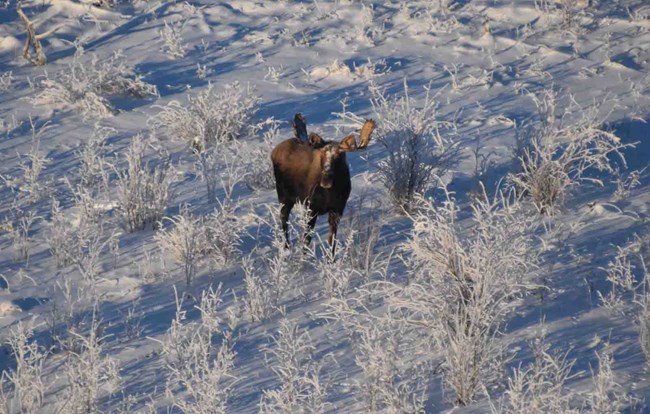
When it comes to monitoring animal species in the Central Alaska Network, we chose species that are spread across the trophic levels of park ecosystems. By doing this, we will have a better chance of observing change wherever it may come. We can try to forecast what kinds of change may occur, but it's harder to predict precisely where it will happen, or what form it may take. Although moose are very large animals, they are a grazing species. They occur in all three Central Alaska parklands, found mostly in low-elevation areas.
From a monitoring standpoint, moose are considered to be good indicators of long-term habitat change within park ecosystems because they depend on large-scale, healthy habitats for food and cover, which in turn are dependent on weather and other habitat patterns across the entire landscape. As a top herbivore, moose may play a key role in influencing vegetation growth, potentially resulting in landscape-scale changes. Moose population numbers directly affect subsistence harvest in Alaska’s preserves.
We monitor moose in all Central Alaska Network parklands to understand:
-
Changes in abundance, distribution, and composition of moose
-
Calf survival and recruitment success for moose
-
Annual human harvest of moose
Contacts:
Mat Sorum, Yukon-Charley Rivers National Preserve
Pat Owen, Denali National Park and Preserve
Kyle Cutting, Wrangell-St Elias National Park and Preserve
Learn more
Last updated: June 4, 2023
